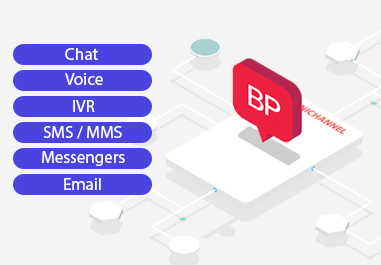In the simplest sense, the role of government is to represent and serve its constituents, those who live under its influence. The government is responsible for improving the community, representing their constituents, and delivering basic services while ensuring that the community runs smoothly. Customer service, therefore, is more than a nice-to-have. It’s essential in the government sector.
With streamlined budgets and limited resources, every dollar counts. Taxpayers naturally want to ensure their tax contributions are being used wisely, and governments are often allocated limited budgets to work with, which can put limits on how the government operates. How then does a government entity maximize its revenue while optimizing its constituents’ ability to communicate?
The answer is a government call center.
What is an SLED Agency?
The meaning of SLED is state, local, or education (SLED) agencies. Because SLED agencies impact the everyday lives of people, their customer communication is a priority. Allowing the community to voice their concerns, get service, and communicate with their government agencies is crucial.
SLED agencies cover more entities than many people probably realize. When you think of all the local government entities, you start to realize the scope. Local government entities can include counties, boroughs, cities, towns, municipalities, public school systems, higher education schools, and special districts. When you multiply these local governments by the people they serve, the need for efficient government call center services becomes clear. The far-reaching influence and effects of these local government entities makes their role in a community very important.
Why SLED Agencies Need Contact Center Technology
Being able to implement a reliable, secure two-way communication system helps government agencies connect with their constituents. And those constituents are used to being able to call, chat, and SMS with ease.
That’s why contact center technology means more than phone lines—much more. People are not only used to communicating across multiple, emerging digital channels, but they also expect it. An effective government call center has to include various communication channels. In this way, government needs aren’t any different than those of the private sector.
What differs are the fiscal requirements. As public entities, their budgets are determined by voters and are usually fixed. With a cloud-based omnichannel contact center, government agencies get the technology they need while remaining fiscally responsible to those they serve.
Call center services for government agencies enable a connection on par with what people come to expect from private businesses but without traditional costs attached.
Government Contact Centers Help Build Trust
When governments serve the local community, trust is paramount. Long wait times, unanswered questions, poor constituent experience, and unresolved issues erode constituent trust. In the modern age, transparency and legitimacy are easy to examine and analyze. And constituents are more empowered than ever before as voices in a community. Social media enables the spread of information at unprecedented levels. This means voicing concerns about the efficacy of the local government in serving the needs of the local community. Therefore, maintaining that person-to-person connection between governing agencies and their people helps clarify truth and aids in trust.
Contact Centers Improve Government Satisfaction
One of the main reasons a constituent contacts their local government is to lodge a complaint or to initiate changes. They’re looking to their elected government officials (and their staff) to help solve a problem. And they are looking for a quick solution, one that a trustworthy, powerful entity like the government is qualified to handle.
If callers don’t get answers quickly, their stress increases to frustration. Without a streamlined communication plan, by the time someone reaches an actual solution-provider, usually an actual person, they’re angry. This makes for a tense interaction, which benefits no one and only compounds the issue that the constituent is facing. And the dissatisfaction with the government grows.
Like any organization that doesn’t thoughtfully communicate or serve its customers well, government organizations facing constituent frustration will ultimately be failing their constituents, and providing good service and effective communication with the community keeps strong bonds with the community. A good contact center can help prevent this failure.
Contact Centers Maintain Fiscal Responsibility
Cloud-based call center sector reduces the implementation and maintenance costs that come with an on-premise call center. The cloud also enables scalability so government entities can easily use what they need when they need it. For example, if there’s a time period where volume increases, their contact center can increase accordingly. With unified reporting, government agencies may even be able to predict when those spikes occur. Unified reporting also allows government agencies to monitor performance on various different communication channels, like voice, email, text messaging, SMS, web chat, messenger apps, and more.
Contact Centers Streamline Operations
In addition to building trust, increasing satisfaction, and fiscal responsibility, there are numerous benefits of a government call center supporting its implementation. Integrating your call center software into your pre-existing software ensures the agency remains streamlined and efficient. It also relaxes any fears about needing to replace the software agencies already use. Many government agencies rely on natively-built software to support their constituents’ needs, whether it’s technology like a customized, native record management system or security systems to ensure restricted access. This means contact center vendors need to be able to have software that can easily adapt to these needs.
The Benefits of Omnichannel Call Center Services for Government Agencies
An omnichannel call center benefits government agencies in several ways. The reasons constituents need government call center services is usually to report a problem. They need something, and because that need is usually structural (given the government’s jurisdiction), it’s immediate.
Because omnichannel call centers give agents and constituents the ability to seamlessly communicate across voice, video, SMS, and text messaging, a government call center quickly addresses problems with much-needed solutions.
In addition to receiving inbound communications, key technology innovations also allow for outbound notifications — this puts the SLED agency in a position to proactively alert constituents of important announcements, problems, and solutions.
Omnichannel technology offers numerous benefits to government call centers that level up their services.
- Avoid high costs: When their call center is cloud-based, agencies avoid the high costs associated with a traditional, on-premise call center, like hardware and maintenance costs as well as in-house professional IT staff, while simultaneously elevating their customer experience.
- Route calls efficiently: A cloud-based call center gives SLED agencies the ability to route calls efficiently and accurately to lead customers to the right agent with the right skills to best assist them.
- Increase customer satisfaction: Advanced cognitive technologies, like AI, bots, and Natural Language Understanding complement human interaction. This decreases wait times, speeds up customer service, and increases overall customer satisfaction.
- Maximize skilled agents: Interactive Voice Response, or IVR, enables constituents to solve basic problems or answer basic questions through a touch-tone keypad or voice input. This takes away routine tasks from people, freeing them up to handle more complex and skilled requests. Furthermore, with the addition of powerful AI, this IVR can be transformed into a conversational IVR, which users can navigate with their natural language for a more personalized experience.
- Protect privacy: Protecting personal information is non-negotiable, especially for a government agency. Any implementation of an omnichannel call center needs to be PCI, TCPA, SOC 2, HIPAA, and GDPR compliant.
- Improve continuously: Monitoring the quality of interactions across channels is only truly possible with unified reporting capabilities. This is where government agencies support transparency and continually improve serving their communities.
How Call Centers Can Improve Other Government Agencies
The key government call center best practices are optimized through a technology that’s reliable, scalable, and affordable. The larger the agency, the greater number of incoming requests it’ll receive. Given the scalability of a cloud-based omnichannel call center, all levels of government can reap its benefits:
- Build trust
- Maintain efficiency
- Achieve fiscal goals
It’s a way of communicating where everyone wins.





